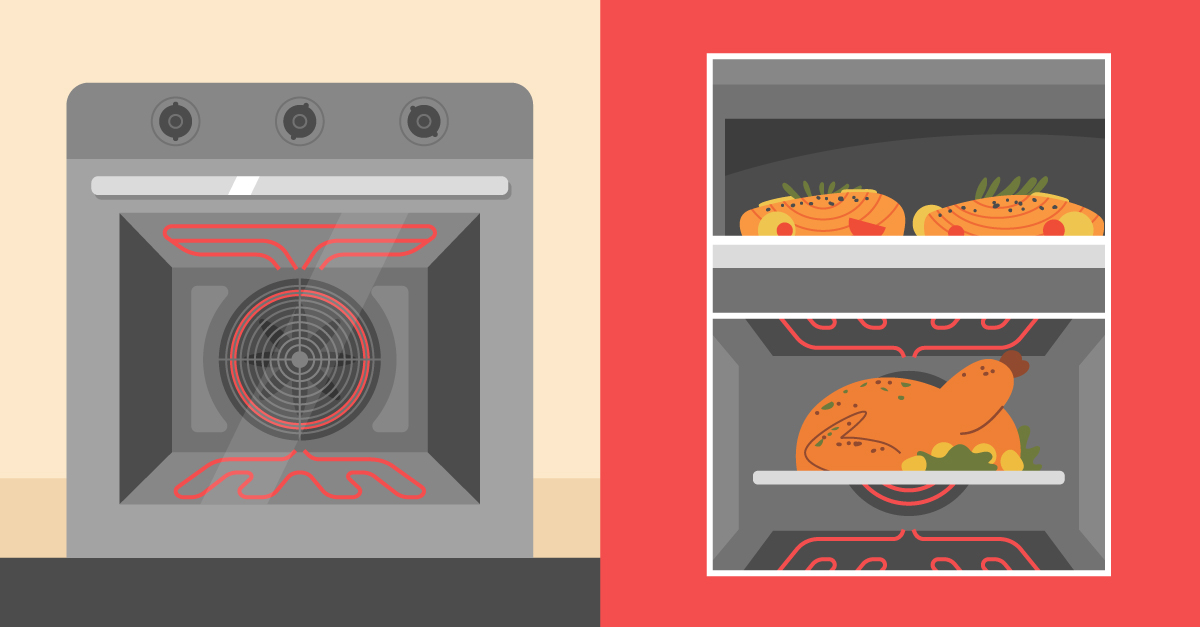Cooking is so enjoyable because there are so many ways to do it. You can fry, grill, boil, bake, broil, and roast, to name a few. And each technique elicits a different flavor; after all, it’s unlikely you’ll ever find a recipe that tells you to roast peanut butter cookies.
In this article, we will discuss the three cooking methods that take place within your oven: baking, roasting, and broiling.
Generally speaking, cooking in the oven leads to healthier meals than stovetop methods. Plus, for any novice cooks out there, baking food instead of pan-frying is an easier way to create delicious textures and richer flavors.
The primary differences in baking, roasting, and broiling are:
- The temperature of the oven
- Where the heat comes from, either above or below the food
These two factors affect what’s cooking in specific ways. Understanding the difference between baking, roasting, and broiling can help transform your cooking from good to great.
Cooking in the oven can be a healthy option
Frying or stovetop cooking is fairly easy and often uses less electricity. However, it does require some kind of fat — cooking oil, butter, or ghee, for example — to protect the food from the heat.
Conversely, cooking in the oven reduces the need for that additional fat. It uses a dry heat, which means heat is applied to the food without additional moisture, like cooking oil. Additionally, cooking in the oven causes moisture within the food to be converted into steam, which helps cook the food, change its texture, and transform ingredients into a baked good.

How to choose between baking, broiling, and roasting
Now you’re ready to put together a meal and cook it in the oven! Consulting the recipe, you see that it calls for roasting — but there’s no roast button on your oven, is there?
On many ovens, when a recipe calls for roasting, you have to press the “Bake” option on the instrument panel. This can be confusing! If you’re following the directions, how do you know you’re roasting when you’ve pressed a button that says something completely different?
Let’s break this down.
Baking
For baking, oven temperatures should be 375 degrees or lower. The oven’s dry heat comes from above and below and envelopes the food, cooking it evenly because all surfaces of the food are exposed to the heat. To take advantage of that even, dry heat, most food should be uncovered. Otherwise, the steam exiting the food will be trapped and will provide additional heat.
This is why you poke holes in potatoes before baking them in the oven: The steam needs to be able to escape, or you’ll have a bit of a mess.
Roasting
Taking things a step further, roasting is baking at a higher temperature, including anything over 400 degrees, but lower than 500 degrees. Like baking, the dry heat comes from above and below the food. Some recipes indicate that food should be placed on a rack or in a roasting pan so that any escaping moisture drips away.
Roasting can help make thicker or tougher foods, such as a full turkey, brown and crisp on the outside. As another example, roasting produce “makes fruits and vegetables look great (that nice golden brown color) and more palatable to the people who aren’t the biggest fan of veggies.”
Broiling
Broiling uses very high temperatures, generally from 500 to 550 degrees, to cook food from above. Most ovens come with a drawer at the bottom, below the lower heating element, specifically for broiling — not for storage space, which is how most people use it.
This method browns, crisps, or sears the top of the food and cooks quickly, so you should be monitoring your meal closely. You can achieve a broiling effect in the main oven by moving the oven rack closer to the top heat source.
Conclusion
Each oven cooking method has its merits for a variety of dishes, be it a roasted turkey or a baked cookie. Some foods, such as chicken, can be cooked just about every way possible, but it’s still important to follow your recipe and see how each technique differs. In time, you can experiment and find out which method cooks your chicken (or your other foods) to your ideal tastes.
Ovens are powerful heat sources that help transform raw ingredients into flavorful, exciting meals and treats. They say cooking is an art, requiring the balance of ingredients and heat for the perfect amount of time. As you learn whether you prefer baking, broiling, or roasting your dishes, remember to have fun.
